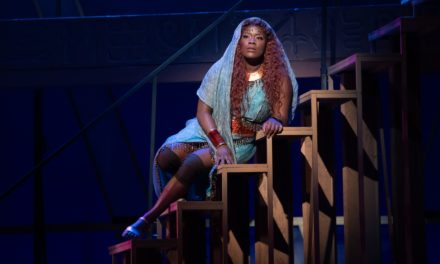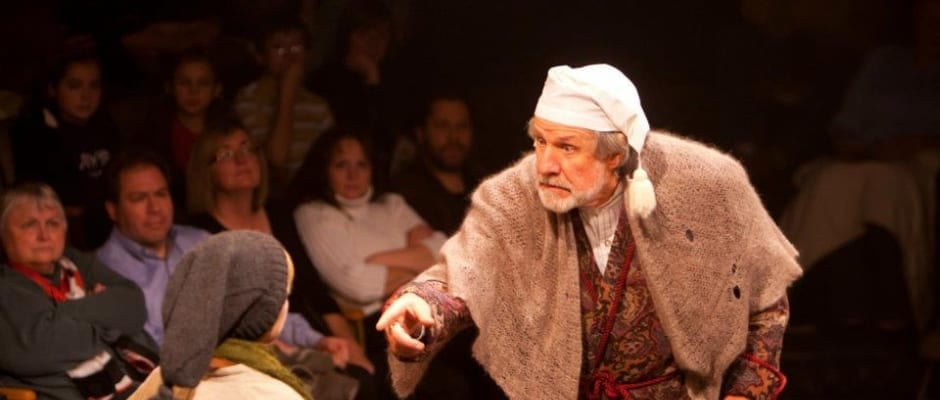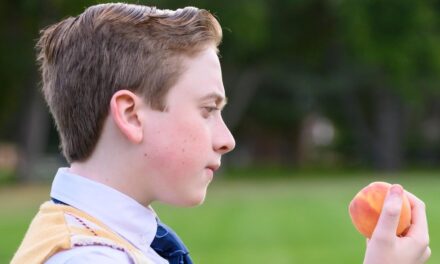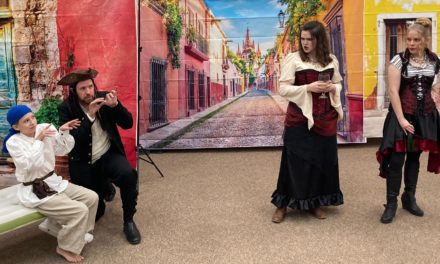MIDVALE — The Sugar Factory Playhouse’s production of The Twelve Dancing Princesses is a classic story with everyone living happily ever after, but not before a mystery plaguing a kingdom is solved. This charming tale is sure to please audiences of all ages and is a shining example of the joy that is local theatre.
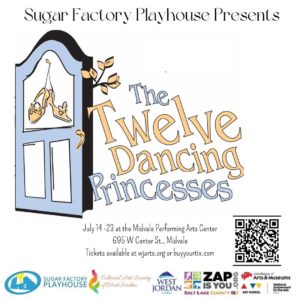
Show closes July 23, 2022.
Based on the fairy tale by the Brothers Grimm and directed by Denise Gull, The Twelve Dancing Princesses is a musical (with a book by Laura Bedore, Dorothy Keddington, and Stephanie Clark; music by Kathy Skidmore; and lyrics by Laura Bedore and Dorothy Keddington) that takes its audience to the kingdom of Gavotte. Here, King Gullible (played by Steve Michaelis) lives with his twelve daughters, a princess named for each month of the year. The king is an overly protective father and locks his daughters in their room at night. For this reason, he is perplexed why the princesses’ dancing shoes are completely worn out each morning and, much to the delight of Howard the Royal Shoemaker (played by Vic Groves), ultimately is bankrupting himself as he pays to replace them. King Gullible eventually accepts the idea from Robert, his loyal page (played by Xander Christensen) that any prince who can solve the mystery of the shoes may marry one of the princesses and inherit a portion of the kingdom. Meanwhile, the princesses have no intention of ceasing their nightly dancing escapades and, led by eldest sister January (played by Kristen Hickman), decide to thwart any effort made to divulge their secret.
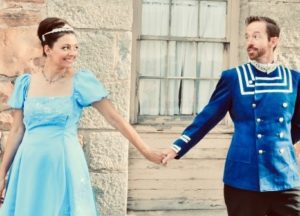 It is while meeting the willing participants of the king’s challenge that one gains appreciation for the costume design details by Gull and Agnes Broberg. Each princess wore a color that loosely represented the month after which she was named, and each prince had a costume that corresponded with the girl of his choice. This attention to color made for a cohesive, organized — even fun — presence on stage.
It is while meeting the willing participants of the king’s challenge that one gains appreciation for the costume design details by Gull and Agnes Broberg. Each princess wore a color that loosely represented the month after which she was named, and each prince had a costume that corresponded with the girl of his choice. This attention to color made for a cohesive, organized — even fun — presence on stage.
With a large ensemble cast that was often on stage at the same time, it was impressive how each character’s personality was showcased and portrayed. Of note, Princess August (played by Kristi Anderson) was the quintessential tomboy that was seen lifting weights frequently and preferred to be called Gus. Princess April (played by Anna Sanford) kept to her namesake and was overtly emotional, giving new meaning to the term “April showers.” Similarly, suitor Sir George of Lincolnshire (played by Aaron “Sparky” Sparks) captured hearts with his exaggerated English accent and upper-class snobbery.
 Hickman gave a noteworthy performance as Princess January. Hickman had a striking presence on stage and her facial expressions were so detailed and authentic it was impossible not to know exactly how her character was feeling – be it frustration with her father or annoyance with her lovestruck sisters. The scene in which she learns her love interest Prince Hugh McManly (played by Roy Dawson IV) has discovered the mystery of the shoes was simple, yet beautiful. She emanated sincere joy without uttering a single word.
Hickman gave a noteworthy performance as Princess January. Hickman had a striking presence on stage and her facial expressions were so detailed and authentic it was impossible not to know exactly how her character was feeling – be it frustration with her father or annoyance with her lovestruck sisters. The scene in which she learns her love interest Prince Hugh McManly (played by Roy Dawson IV) has discovered the mystery of the shoes was simple, yet beautiful. She emanated sincere joy without uttering a single word.
While there was an array of solos performed by the principal actors, the music seemed to be at its best during the ensemble numbers. Music director Aubrey Vance (who also portrayed Princess February) surely emphasized the importance of harmony as each part sounded perfectly in tune and balanced. It would be amiss not to appreciate the choreography efforts of Kassidy Rackham. With many dance sequences, often with at least 20 actors performing at once, it would be easy for the scenes to look overcrowded. On the contrary, the well-rehearsed actors were strict with their movements and always appeared to be in unison — which was no easy feat given the conservatively sized stage.
One unique aspect of The Twelve Dancing Princesses is the need to introduce so many characters. This may have contributed to the 2.5 hour duration of the play, which felt too long. This is in nowise a reflection of those who performed, but rather the script could be cut down significantly without sacrificing the integrity of the story. Often, scenes were compacted with songs and dialogue that ultimately did not advance the plot. For example, when the princes find themselves locked in the king’s dungeon, there were two independent songs and a short encore. What resulted was messy scene simply because there was too much to remember.
Overall, the feelings of camaraderie and enjoyment shared on stage were infectious for this first-time patron of a Sugar Factor Playhouse production. Combined with a cast ranging from young children to more seasoned actors, the inclusivity of The Twelve Dancing Princesses was a reminder of how the arts truly can unite people as they work towards a common goal to beautify and enrich local communities with quality entertainment.

These reviews are made possible by a grant from the Salt Lake County Zoo, Arts, and Parks program.


